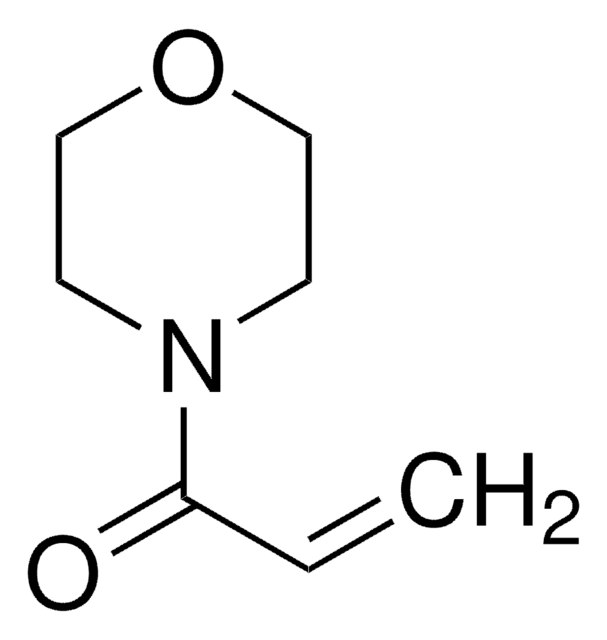655821
2-Acrylamid-2-Methyl-1-Propansulfonsäure Natriumsalz -Lösung
50 wt. % in H2O
Synonym(e):
2-Methyl-2-[(1-oxo-2-propenyl)amino]-1-propanesulfonic acid sodium, Sodium 2-acrylamido-2-methyl-1-propanesulfonate, Sodium acryloyldimethyltaurate
About This Item
Empfohlene Produkte
Konzentration
50 wt. % in H2O
Brechungsindex
n20/D 1.4220 (lit.)
Dichte
1.2055 g/mL at 25 °C (lit.)
SMILES String
[Na+].CC(C)(CS([O-])(=O)=O)NC(=O)C=C
InChI
1S/C7H13NO4S.Na/c1-4-6(9)8-7(2,3)5-13(10,11)12;/h4H,1,5H2,2-3H3,(H,8,9)(H,10,11,12);/q;+1/p-1
InChIKey
FWFUWXVFYKCSQA-UHFFFAOYSA-M
Allgemeine Beschreibung
Anwendung
- As a monomer in the formation of polyelectrolyte copolymer gels for potential application in bioengineering, biomedicine, and water purification .
- In the fabrication of Schottky diodes, humidity sensors, and lithium-ion batteries.
- As a monomer in the synthesis of a hydrogel nanocomposite applicable as a potential adsorbent for dyes .
Lagerklassenschlüssel
10 - Combustible liquids
WGK
WGK 1
Flammpunkt (°F)
Not applicable
Flammpunkt (°C)
Not applicable
Analysenzertifikate (COA)
Suchen Sie nach Analysenzertifikate (COA), indem Sie die Lot-/Chargennummer des Produkts eingeben. Lot- und Chargennummern sind auf dem Produktetikett hinter den Wörtern ‘Lot’ oder ‘Batch’ (Lot oder Charge) zu finden.
Besitzen Sie dieses Produkt bereits?
In der Dokumentenbibliothek finden Sie die Dokumentation zu den Produkten, die Sie kürzlich erworben haben.
Kunden haben sich ebenfalls angesehen
Unser Team von Wissenschaftlern verfügt über Erfahrung in allen Forschungsbereichen einschließlich Life Science, Materialwissenschaften, chemischer Synthese, Chromatographie, Analytik und vielen mehr..
Setzen Sie sich mit dem technischen Dienst in Verbindung.


![[2-(Methacryloyloxy)-ethyl]-dimethyl-(3-sulfopropyl)-ammoniumhydroxid 95%](/deepweb/assets/sigmaaldrich/product/structures/217/219/73c91e1c-0ee4-4b3d-bead-a6dc3d09d1da/640/73c91e1c-0ee4-4b3d-bead-a6dc3d09d1da.png)
![[2-(Methacryloyloxy)ethyl]trimethylammoniumchlorid -Lösung 75 wt. % in H2O](/deepweb/assets/sigmaaldrich/product/structures/316/612/66b0f4cf-d060-427d-b4f5-e8fab3e5cffe/640/66b0f4cf-d060-427d-b4f5-e8fab3e5cffe.png)





![[3-(Methacryloylamino)propyl]trimethylammoniumchlorid -Lösung 50 wt. % in H2O](/deepweb/assets/sigmaaldrich/product/structures/189/736/089bc8ae-2a98-416d-9f9a-a0a510b6b828/640/089bc8ae-2a98-416d-9f9a-a0a510b6b828.png)



